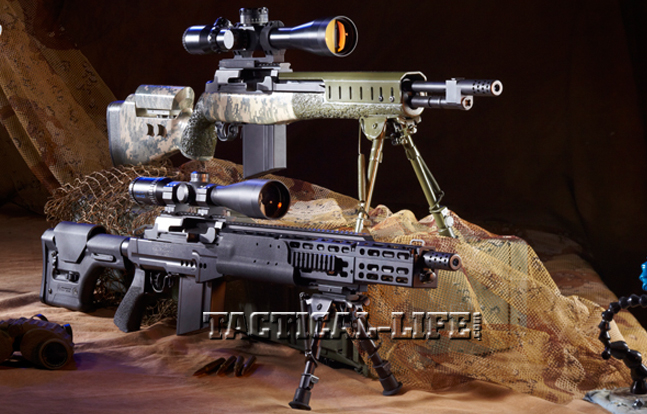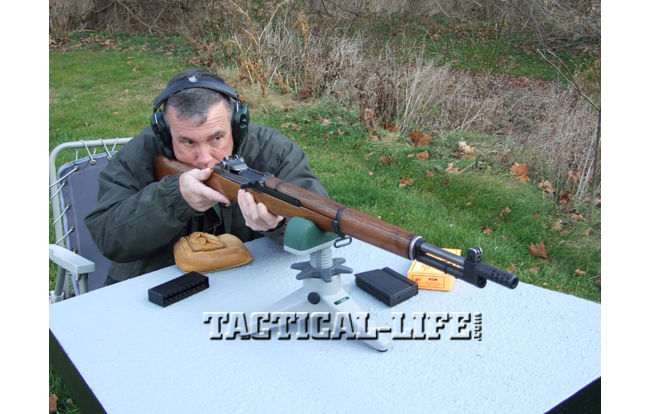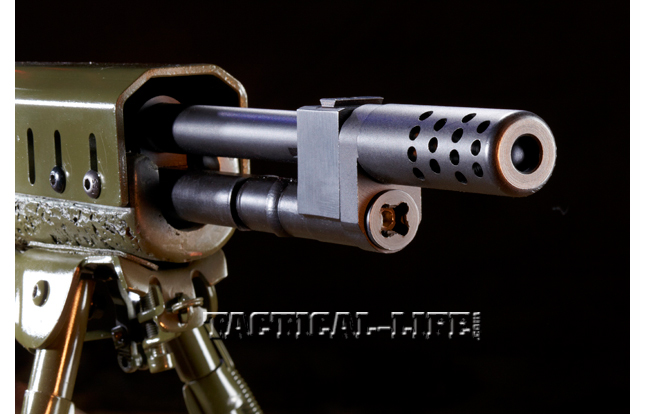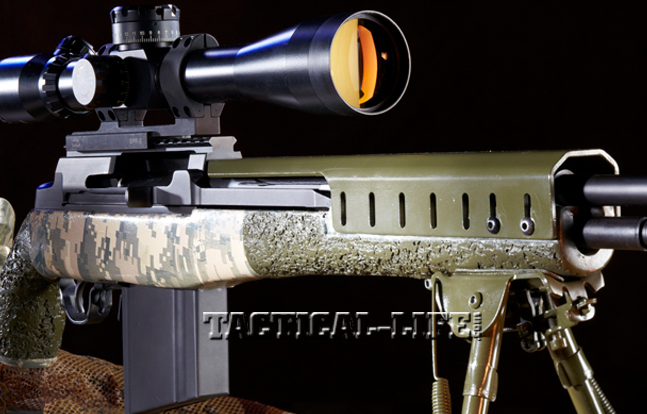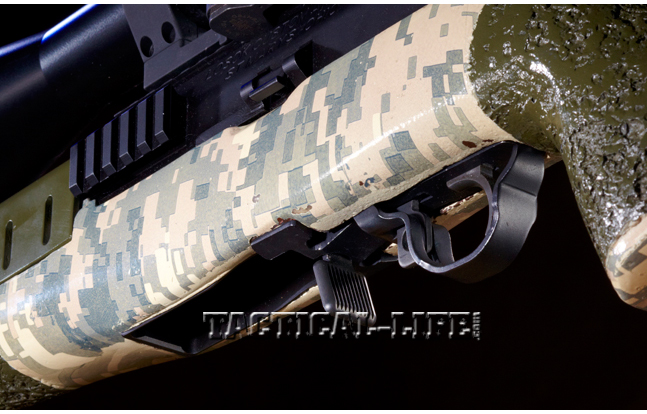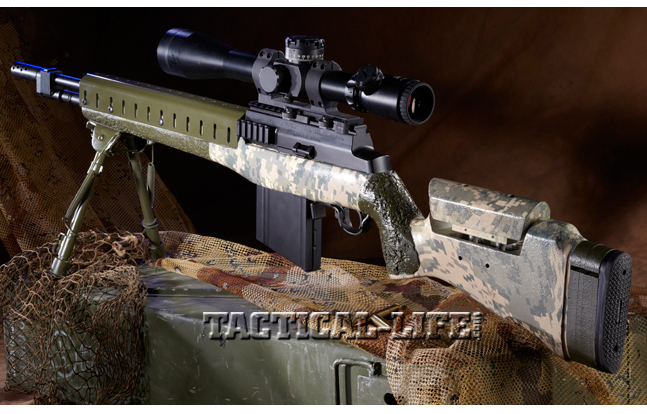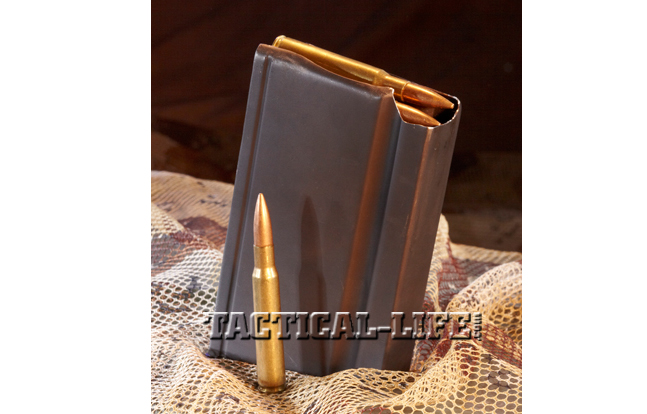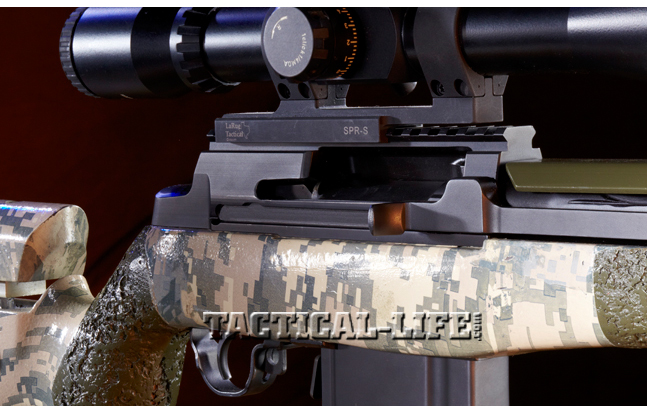The late, great General Douglas MacArthur, in his farewell speech to Congress, famously said, “Old soldiers never die, they just fade away.” While this statement may be true of soldiers in human form, it is not always true of their equipment. Some pieces of military equipment keep soldiering on due to brilliant design long after they were thought to have exceeded their natural lifespan.
The M1 Garand is one such design. Hailed by General George S. Patton as “the greatest battle implement ever devised,” the M1 Garand refused to fade away after World War II. It remained in frontline service throughout the Korean War and into the Vietnam War, where it was initially provided to Army of the Republic of Vietnam as their main battle rifle. Why a 10-pound rifle was issued to the slighter-statured ARVN forces over M1 or M2 carbines I don’t know, but in any event, the forces so armed were definitely upgraded when their Garands replaced the various French arms they were using at the start of hostilities.
Even though the M1 Garand eventually ceased to be the primary arm issued to our allies in need, it remained very popular with civilian shooters—to the point that special competitive shooting matches were created just for the M1, adding to its popularity. For a time, Springfield Armory produced a run of M1 Garands, in the original and “Tanker” formats, which were sold alongside their popular M1As.
Advertisement — Continue Reading Below
I own an original M1 Garand produced at the government Springfield Armory Arsenal in 1942. Along the way someone replaced the military stocks with a beautiful set of black walnut stocks. Otherwise, the weapon, arsenal-refurbished in 1951, is totally original. It may have had an interesting history—it certainly has a prized space in my gun safe. However, it’s also a shooter. In fact, if I could only have just one rifle with which to defend hearth and home under any and all circumstances, my Garand would be my choice, despite its 75-year-old pedigree.
Marching On While the M1 Garand is a great gun as is, its development has not remained stagnant. Of course, the M14/M1A was a direct outgrowth and upgrade of the M1, improving it in some respects, and making lateral moves in others (to wit, replacing the original .30-06 chambering with the .308 Winchester cartridge), but that weapon, as fine as it is, did not represent a radical departure from the original. Enter Losok Custom Rifles and its owner, Mark Lammers. Lammers has taken the original M1 Garand platform to places heretofore untraveled, achieving in his guns a level of power unattainable by the original Garands. I first worked with Mark’s 21st-century Garand—the Valkyr—at an advanced sniper training school put on by OSS-I in 2011. The rifle featured a 24-inch GI Garand barrel—which was quite manageable—and in lieu of the original eight-round en-bloc clip, a 20-round .30-06 adapted from the Browning BAR. Equipped with a Harris bipod, and using 168-grain Hornady Amax Garand match loads that Lammers provided, the Valkyr produced tight MOA groups out to 465 yards—something not possible with an original model. Recently, Mark provided me with the newest iteration of the Valkyr, which contains some important upgrades, along with a new ramped-up load to shoot—a load unsuitable for the classic original—and it is a beauty. Before I continue, allow me to reassure some of the Garand aficionados out there who may be cringing at the thought of Losok Custom hacking up original Garands. Worry not, because Losok starts with the original Garand design, and not the rifle itself, to build their 21st-century take on the gun.
Grandiose Garand
Losok begins with a receiver milled from 4340 billet steel and treated in Blacknitride for durability. Added to that is an 18.25-inch barrel (as tested) from Citadel, a custom gas cylinder system and an operating rod system to handle the increased pressures. The barrel of the Valkyr I tested was an off-the-shelf tanker-configured model. Citadel barrels on the production guns are air-gauged and profiled with a custom contour in the rear portion to increase stiffness. Losok also offers as an option a 24-inch barrel. Personally, I liked the 18.25-inch model best.
Advertisement — Continue Reading Below
The Valkyr’s operating rods are newly manufactured in the United States from modern steel that improves in strength and durability on the original Garand operating rods. Also made in the U.S. are the rifle’s 416 stainless steel gas cylinders, which are heat- and nitride-treated for a level of durability and longevity well in excess of the original cylinders. The gas cylinder lock and brake combo and the threaded muzzle-attachment device are also milled from 416 stainless, which Losok treats in the same manner as they do the cylinders. The operating rod spring is an upgraded power spring from Wolff Gunsprings cut to length for the Valkyr rod.
The stock on the 18.25-inch Valkyr is the same as that on the 24-inch version I originally shot—a McMillan M3 Adjustable M14 stock modified to fit the larger Valkyr. The McMillan stock has a standard length of pull, standard comb-height adjustments and a built-in Picatinny rail on the bottom of the forend. The stock has a green metal top forend half that blends in with the army digital camo pattern situated along the remainder of the rifle. The 18-inch version can also be had with a stock by Sage International.
Range Workout
I was able to test the new Valkyr the day after Thanksgiving at our range at the Baltimore Village (OH) Police Department. On Thanksgiving Day, the weather had been balmy, sunny and in the mid-to-upper 60s—quite literally T-shirt weather. However, by Friday morning the weather had changed. The high was expected to be at best 47 degrees, and there was a wind—quite a wind, actually—with a constant speed of 11 miles per hour, gusting regularly into the 17 to 25 mph range. It blew directly into our faces and then would shift a bit, angling from the sides. The wind blew so hard that it began tearing the target off the supporting cardboard after I had fired a string. We managed to get to it before it was gone entirely—when it was hanging by a single staple. Lammers provided me with some of his specially designed 208-grain A-Max loads by HSM Ammunition. Driving the bullet was 54 grains of IMR 4350. Out of the Valkyr’s 18.5-inch barrel, the load achieved an average velocity of 2,511 fps. The rifle weighed approximately 9 pounds empty and with a 3-12×50 Horus Vision Hawk in Burris XTR rings with a H425 reticle mounted.
Advertisement — Continue Reading Below
Smooth Operator
The custom loads fit easily into the magazine and locked smoothly into place. The mag release mechanism was an M1A-style lever located at the rear of the magazine. The Garand-type safety, which made for totally ambidextrous operation, functioned positively. The rifle chambered the first round smoothly, and I didn’t notice any appreciable or detrimental difference in bolt-travel length as compared to a .308 M1A. The trigger was crisp, and take-up was minimal and easily managed. My first six-shot group at 150 yards was bad, measuring 6 inches across for five shots, Still, all six landed in the head area of the bad-guy silhouette, and all were kill shots.
Shooting the first group, I experienced some eye relief issues with the scope, which was set too far out for me, causing scope shadow. Lammers moved the scope to the rear, closer to my eye, which took care of the shadowing problem. My next group, even with the wind blowing and gusting, shrank to under 2 inches. I was firing off a steel and concrete bench using the Valkyr’s Harris bipod for support and without sandbags or any other stabilizing device. Consequently the rifle shifted around a bit shot to shot. Had there been no wind, and had the targets been stationary (the cardboard was held to rope crosspieces between two posts and would sway a bit), and had I been firing prone in the dirt, there is no doubt the Valkyr would have shot sub-MOA groups all day long. I’ve seen Lammers with his Valkyr shoot, under better conditions, groups of the one-hole type, and on that gusty day he shot a group a tad better than mine with a called flyer and a close string.
In my list of troubles, I didn’t mention recoil; that’s because there wasn’t much—not enough, at least, to hinder my shooting. The Valkyr’s weight, stock design and long-stroke Garand-type gas operating system negated the recoil potential of Lammers’ hot 200-plus-grain .30-06 handload, turning it into a gentle push. I remember firing 220-grain .30-06 factory loads out of my old Remington 721 Sporter. Even in my younger days, I didn’t much relish the thumping that that combo would dish out. I was very, nay, extremely satisfied with the Valkyr’s performance. It didn’t malfunction in the least.
Advertisement — Continue Reading Below
Old School
For comparisons sake, and to link the present with the past, I fired my World War II-era Garand at the same 150-yards-distant silhouette that I had used testing the Valkyr (and in the same wind conditions), using iron sights and a plastic shooting rest for support. Although I aimed for the body rather than the head, the group size—approximately 8 inches in diameter—showed that this old soldier still has a lot of fight left in it. Had I taken aim at the head, I certainly would have had a few hits. For his part, Lammers had brought along his original International Harvester M1, which he had shot in Camp Perry competition and which he’s had retrofitted with his new operating rod and gas system. The original stocks still fit. With the Losok system in place, even an original M1 can safely operate using 208-grain HS Munitions custom loads.
They shot smoothly and accurately through the Harvester M1, with a comfortable level of recoil. Lammers had just made the change to the gun and hadn’t yet sighted it in, so it shot somewhat high with a couple of rounds off the top of the silhouette paper. Sight adjustment would lock those rounds in dead center, producing groups more than tight enough for a foxhole partner. Losok sells the parts necessary to upgrade your own Garand’s gas system, and Lammers swears that they are all drop in. If you want to keep your Garand in basically stock condition, but wish to either shoot it a great deal or with some stiffer loads, this may be the way to go. If Mark is willing to risk damage to his rare International Harvester M1, then I believe that your or my Garand will be just as safe.
Ready For Battle
The Valkyr is a very mission-capable rifle, and it not only keeps the Garand operating system from fading away, but also continues the .30-06’s legacy as a battle cartridge. Lammers speculates that had the U.S. military stuck with the .30-06 and not gone to the tremendous expense of re-chambering all their .30-06-caliber weapon systems to the shorter-action .308 Winchester when they adopted the M14, they would not be now clamoring for .300 Winchester Magnum rifles sniper rifles. With the proper loads, the .30-06 can handle anything the .300 WM can, and rifles like the Valkyr can shoot rounds with pressure higher than anything the original Garand could hope to handle. However, to meet potential demand, a Valkyr chambered in .300 WM will soon be made available. Carrying 20 rounds of the finest battle rifle cartridge ever devised, the Valkyr is capable of dispensing multiple shots repeatedly—shots that, with a 200-plus-grain load, would strike against heavy barrier cover to a degree unmatchable by the .308 Win.
Advertisement — Continue Reading Below
The Valkyr will be made available through Triad Gun LLC, as will the M30 LRT, having been licensed to them for production. Receivers are currently in production, and rifles will be available by the time this magazine hits your hands. The MSRP for the .30-06 LRT in the standard 18.25-inch configuration is $2,895; for the 24-inch version mounted in the Sage stock, $3,400. The 18.25-inch LRT can also be had in a Sage stock at a similar price. Other stock options may become available as the program develops. Reach Triad by calling 330-644-8742. Triadgun.com should be live in Spring 2013.
For those who want to take a step beyond the “basic” Valkyr rifles, Lammers, in cooperation with Triad, plans to do a limited 15-rifle-per-year run of Valkyrs featuring custom barrel configurations, stocks and other options, with quotes available on request. The customs will have special engraving and serial number prefixes to set them apart from the production models.The prices for these limited-edition rifles will start at $4,000. Lammers will custom build each rifle one at a time with a line of stocks designed in consultation by two specialized stock makers. For more on Losok, visit losokcustom arms.com or call 740-363-8437.
